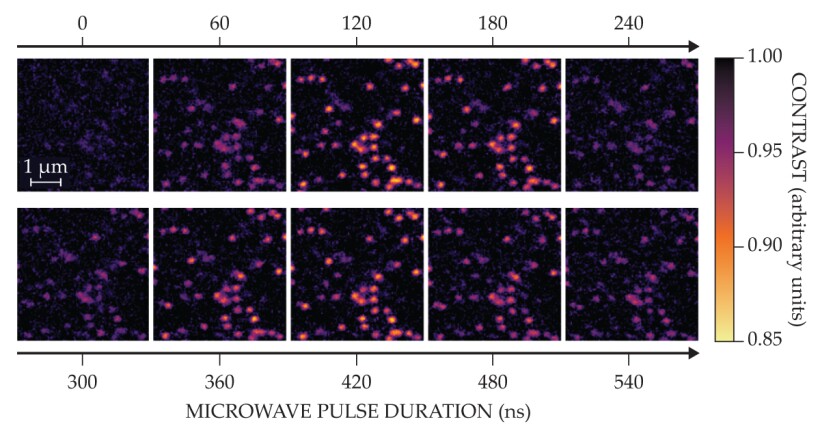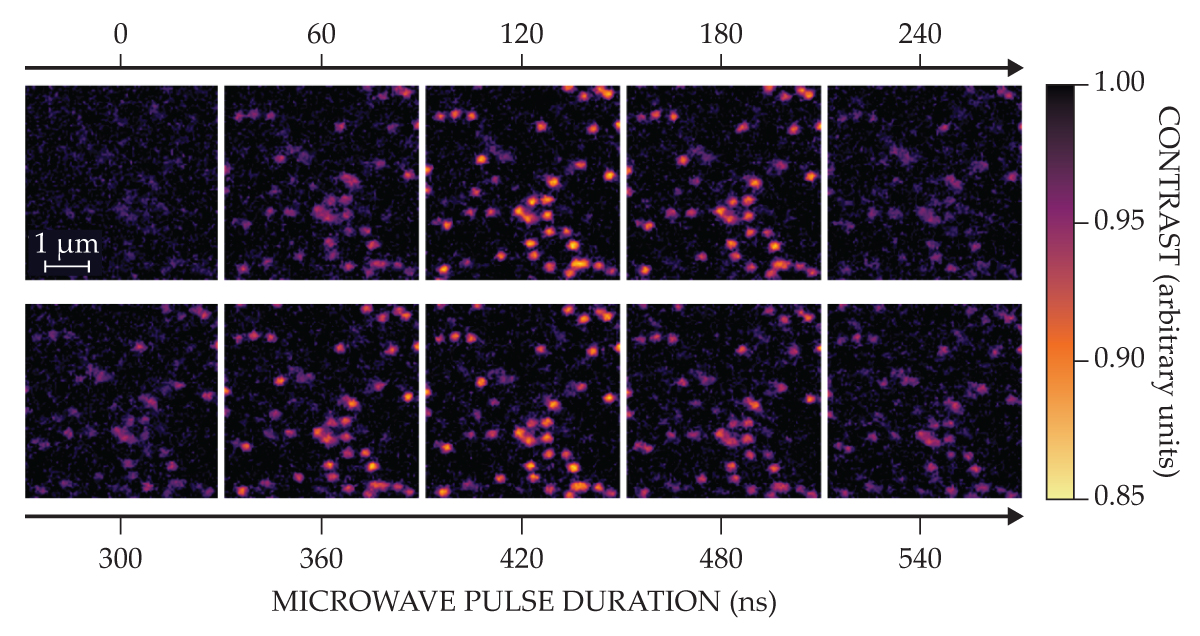Diamond-defect clusters are measured with speed and precision
DOI: 10.1063/pt.upwb.mzmf
In a crystal of diamond, the combination of a nitrogen atom and a nearby empty lattice site forms a nitrogen–vacancy (NV) center. NV centers are point defects that behave like tiny, atomic-scale magnetometers. Because of their sensitivity to magnetic fields, electric fields, temperature, and even strain, NV centers are useful quantum sensors for measuring surface chemistry
Optical measurements of an NV center’s electronic and magnetic states offer nanoscale spatial resolution, but they show what’s happening at only one location. Individual NV centers can be measured sequentially to cover a larger area, but that approach is slow and can’t show what’s happening in multiple locations at the same time. Alternatively, groups of many NV centers are measurable simultaneously, but signal averaging limits the spatial resolution.
Now researchers have combined the imaging benefits of single and multiple NV centers in one experimental platform, without each approach’s limitations. Two independent groups—one led by Shimon Kolkowitz of the University of California, Berkeley, and the other by Nathalie de Leon of Princeton University—controlled and measured dozens of NV centers simultaneously. The parallel observations from multiple NV centers have the point-like precision of previous measurements of single NV centers.

The bright spots in each panel show fluorescing nitrogen–vacancy (NV) centers over time. Two research groups each controlled dozens of NV centers in parallel and obtained spatially and temporally precise images of them with high-sensitivity cameras. (Image adapted from K.-H. Cheng et al., Phys. Rev. X 15, 031014, 2025

In neutral-atom quantum computing, dozens or hundreds of qubits are observed simultaneously. To make the observations, researchers have recently developed arrays of optical tweezers, in which each tweezer traps a single atom or molecule. Then a high-sensitivity camera can image the atoms or molecules in parallel by precisely counting the photons generated by the molecules’ or atoms’ fluorescence. Both Kolkowitz and de Leon, working with their collaborators, reasoned that a similar approach could work in diamond for NV centers. The two groups used the same high-sensitivity cameras for NV center readout and then added specialized optical instrumentation that controls the NV centers and manipulates their charge and spin states.
The speedy, simultaneous, and high-resolution measurements of dozens to hundreds of NV centers allow for the study of how one NV center’s state may be correlated with another’s. The investigation of temporally and spatially coherent fluctuations could be useful in studying noise or other stochastic properties in superconducting materials, for example. The new capability could also be useful for observing single biological molecules in vivo and measuring their chemical and dynamical interactions. (M. Cambria et al., Phys. Rev. X 15, 031015, 2025
This article was originally published online on 8 August 2025.
More about the Authors
Alex Lopatka. alopatka@aip.org

